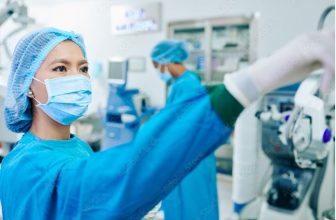
What Is A Labor and Delivery Nurse?
Discover the role and responsibilities of a labor and delivery nurse in this comprehensive guide. Gain insights into the essential skills, education requirements, and the rewarding nature of this vital healthcare profession.
What is a Labor and Delivery Nurse?
Labor and delivery nurses support mothers throughout the birthing process and give the newborn essential postpartum care. The psychological and physiological needs of the parents are well understood by L&D nurses, who are excellent communicators. They also need to be sensitive and able to make quick decisions.

L&D nurses, like all nurses, need to keep their cool when patients’ emotions run high and pain levels rise, and they frequently instruct partners and other family members on ways to ease their loved ones’ suffering during labor.
While both L&D nurses and nurse-midwives are RNs, the latter have received additional education and certification to practice as midwives. A nurse-midwife can supervise labor and delivery nurses and work directly with pregnant women.
What does a Labor and Delivery Nurse do?
Responsibilities of Labor and Delivery Nurse include:
- Patients in triage are evaluated for signs of preterm labor, active labor, rupture of membranes, and other problems or confounding conditions related to pregnancy.
- Moving around the operation room to help with unexpected C-sections and other gynecological and obstetrical emergencies and charge.
- Anesthesiologists, physicians, midwives, lactation nurses, and nurses are all part of the care management team you will collaborate with.
- Labor and delivery care, from pre-labor monitoring to induction and epidural placement.
- Helping expectant mothers stay pregnant until delivery.
- Using EHRs for patient documentation.
- Performing wellness checks on expectant mothers.
- Providing checkups and care for newborns.
- Support throughout and after pregnancy and breastfeeding.
- Vaccinations and other pharmaceuticals must be administered.
Where do labor and delivery nurses work?
Acute care hospitals are the most typical workplace for L&D nurses. There are maternity wards in many hospitals nowadays.
- Antepartum rooms
- Postpartum rooms
- Operating rooms
- Labor rooms
- Infant nurseries
- Triage rooms
What is the Specialization of a Labor and Delivery Nurse?
Some specializations include:
- High-risk pregnancies
- Advanced maternal age
- Fetal development issues
- Cesarean section (C-section) birth
- Anesthetics and pharmacology
What are the Skills of a Labor and Delivery Nurse?
Labor and Delivery Nurses must possess unique skills and qualities to excel in their field. Some of these include:
Effective communication skills:
Labor and Delivery Nurses must communicate clearly and effectively with patients and their families, ensuring that they understand the procedures, options, and potential risks.
Ability to remain calm and composed:
The labor and delivery process can be highly stressful and unpredictable. Labor and Delivery Nurses must maintain a calm demeanor, ensuring they can provide support and make critical decisions in high-pressure situations.
Strong observational and critical thinking skills:
Labor and Delivery Nurses must closely monitor the progress of labor, assess any signs of complications, and make quick decisions to ensure the safety and well-being of the mother and baby.
Empathy and compassion:
Labor and Delivery Nurses must approach their work with empathy and compassion as they support women through one of their life’s most significant and emotional experiences.
How to Become A Labor and Delivery Nurse?
Labor and delivery nurses have important responsibilities in the healthcare field. They must get a lot of schooling and score high on a test before working in the field. Read on to learn what it takes to start a labor and delivery nurse career.
- Complete a BSN program at an accredited university.
- Get your nursing license by scoring well on the NCLEX-RN exam. Even if you still need a BSN, you can take the exam and become a registered nurse.
- Get some real-world experience. After completing your education and passing the NCLEX, you can start your labor and delivery nurse career.
- Get a master’s degree in nursing (MSN) if you’re interested in a higher-paying position. An MSN is not required to work as a labor and delivery nurse, but doing so can open doors to better pay and additional opportunities.
What are the Certificates of Labor and Delivery Nurses?
BLS certification must be renewed every two years. The recertification course is shorter than the original educational program.
- Certified Nurse Midwife (CNM)
- Electronic Fetal Monitoring (C-EFM)
- Advanced Cardiac Life Support (ACLS)
- Inpatient Obstetric Nursing (RNC-OB)
- Neonatal Resuscitation Program (NRP)
How much does a Labor and Delivery Nurse Make?
As of May 2021, the BLS reports that the median average salary for all RNs is $77,600, or $37.31 per hour, which will vary depending on location. Some labor and delivery nurses make more than that, but the average compensation is close to that payment. Experts can get a higher wage for their services.
What is the Career Outlook for a Labor and Delivery Nurse?
In other words, focusing on learning and development is a wise choice if you’re concerned about your future employment chances. The Bureau of Labor Statistics projects a 6 percent increase in nursing jobs from 2021-2031, up to over 200,000 new nurses.
FAQ’s
What is a labor and delivery nurse?
A labor and delivery nurse is a specialized healthcare professional who provides care and support to women during pregnancy, labor, childbirth, and postpartum. They work closely with doctors and other medical staff to ensure the well-being of both the mother and the baby.
What are the responsibilities of a labor and delivery nurse?
Labor and delivery nurses have a range of responsibilities, including monitoring the progress of labor, administering medications or pain relief techniques, assisting with various medical procedures, providing emotional support to the mother and her family, and advocating for the needs and preferences of the mother during childbirth.
Do labor and delivery nurses only assist with vaginal deliveries?
No, labor and delivery nurses are trained to assist in various childbirth scenarios, including vaginal deliveries, cesarean sections (C-sections), and other medical interventions. They are equipped with the knowledge and skills to provide comprehensive care and support to women regardless of the type of delivery they require.
Can labor and delivery nurses provide breastfeeding support?
Many labor and delivery nurses are trained to provide basic breastfeeding support and education. They can assist with initiating breastfeeding, help with proper latching techniques, and offer guidance on breastfeeding positions and common challenges that new mothers may face.
Are labor and delivery nurses involved in postpartum care?
Labor and delivery nurses typically provide immediate postpartum care to the mother and the baby, ensuring their well-being and assisting with immediate needs. However, once the mother and baby are stable, the responsibility for postpartum care is often transferred to postpartum nurses who specialize in that area.
How can I become a labor and delivery nurse?
To be a labor and delivery nurse, you need to finish nursing school, pass the NCLEX-RN exam, and gain experience in maternal-child health. It is recommended to seek additional certifications or training specific to labor and delivery nursing to enhance your skills and increase your job prospects in this specialized area of nursing.







